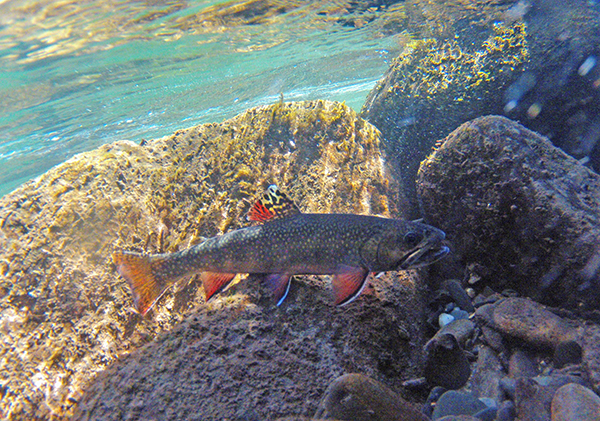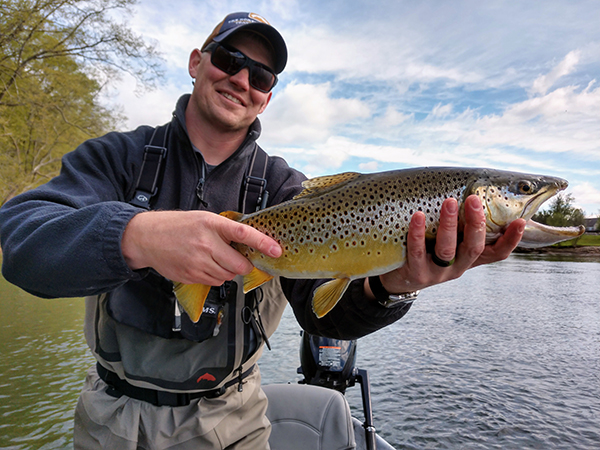Another busy spring seems to be transitioning into summer. We started wet wading last week as warm, sunny days have made it quite comfortable to leave the waders behind. Dry fly fishing has been excellent and water levels are about as good as we’ve seen them in a long time.
After an exceptionally wet autumn and winter this spring didn’t need to be that wet for us to have high water. Our spring was more or less on point when it came to rainfall, but it didn’t take much to get our water levels high on a few occasions.
One thing we’ve noticed this year is that there seems to be a bit of an uptick in size of the trout here in the Smokies. This is a cyclical event where we’ll have a few more or few less fish in the streams due to mortality from floods or drought. We’ve likely had a few spawns washed out from high water events, but the consolation prize is that the trout are a bit larger.
You could say it’s a form of “Even Steven”. The streams support about the same amount of biomass regardless of whether it’s more small fish or fewer larger fish. Fortunately even as there are probably fewer fish in the system, it’s not a dramatic drop in numbers so we haven’t seen a lower catch rate. It’s been a great year for numbers as well as size in the Smokies.
Right now you’ll do pretty well with almost any fly you choose within reason. Any dry fly or nymph you choose in #14 should do quite well. Our favorite set up lately has been a #14 or #16 Stimulator with a #16 beadhead nymph trailing about 24″ underneath. Both dries and nymphs are catching plenty of fish, but that rig seems to find the best of both worlds.
A Parachute Adams is never wrong along with a myriad of other patterns you might choose from. As always, it’s far more about your presentation than the exact fly you choose.
It’s been a relatively tough spring on our tailwaters. Heavy rains over the winter filled up the reservoirs prematurely so there hasn’t been an abundance of good flows for fishing. There were some spectacular days with good flows, so that made the high water even more difficult to bear because there are absolutely some great fish in the rivers this year. Last year was one of the best for overall numbers on the Clinch and virtually all of those fish are still in the system, just larger than last year. Fortunately it looks like there will be some good flows for those who head that way.
As is always the case with our tailwaters, a #16-18 Beadhead Pheasant Tail will do considerable damage and #18-20 Zebra Midge is pretty handy as well. We’ll see what the Sulphurs do on the Clinch this year as they are relatively inconsistent from one year to the next, but it’s always fun to check.


